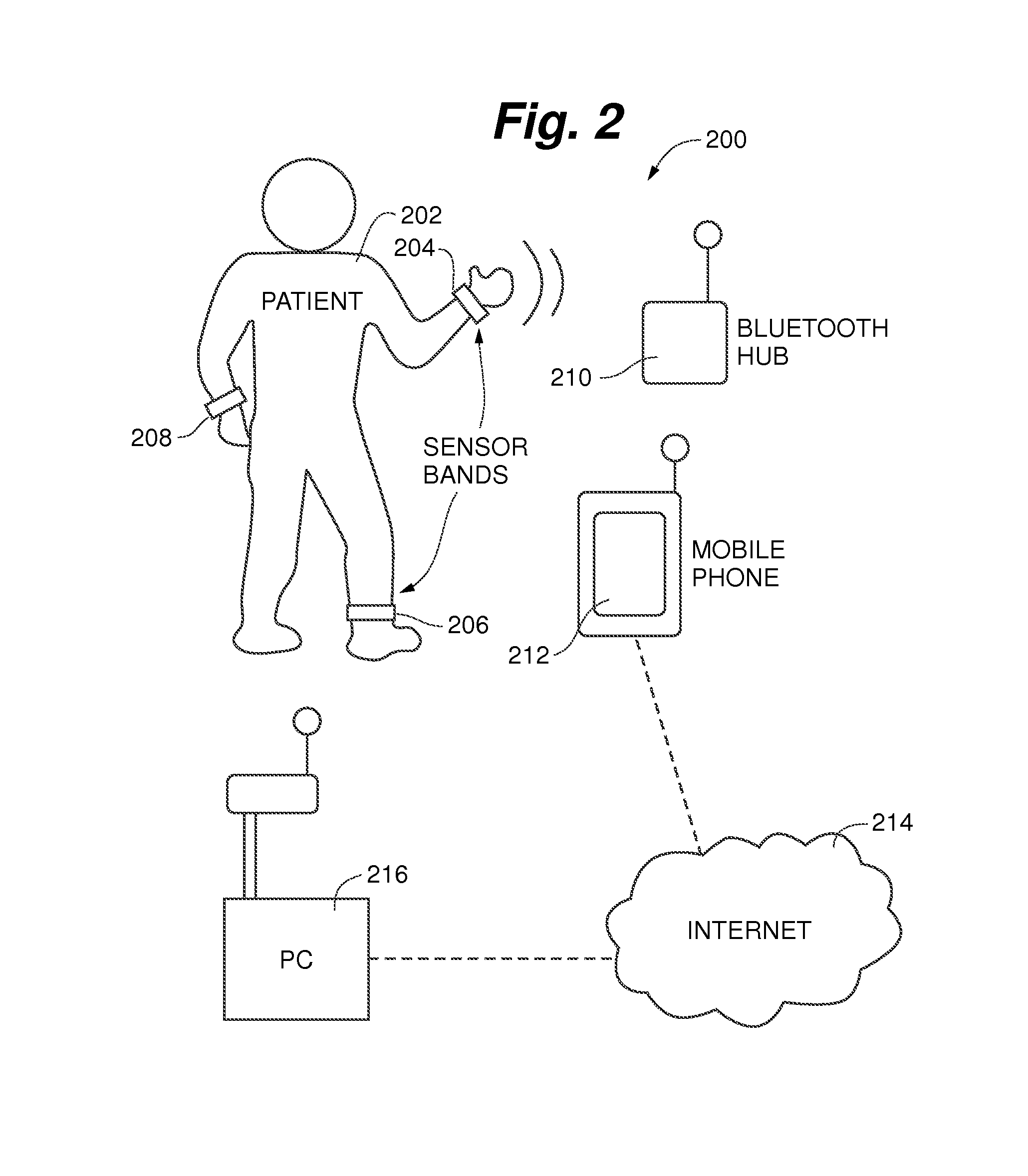Methods and systems for creating a preventative care plan in mental illness treatment
a mental illness and preventative care technology, applied in the field of medical devices, can solve the problems of high cost of data entry by health professionals, risking patients' future mental wellness, and inadequate biomedical data used in such a chart, and achieve the effect of avoiding irreversible brain damage to patients
- Summary
- Abstract
- Description
- Claims
- Application Information
AI Technical Summary
Benefits of technology
Problems solved by technology
Method used
Image
Examples
embodiment 100
[0058]FIG. 1 is a diagram showing an embodiment 100 of data matrix that may be used by the present invention. The data matrix 102 comprise physiology 108, disorder 110, condition / symptom 112, lifestyle variables 104, and state of mood / behavior 106. The physiology 108 comprises data relating to skin conductivity, pulse, temperature, chemical exposure, biomarkers, EKG, EEG, vital signs, vocal cord vibration, heart rate, muscle movement, EMG, respiration, and UV light exposure. The disorder 110 comprises data relating to bipolar, depression, schizophrenia, mania, PTSD and anxiety. The condition / symptom 112 comprise data relating to OCD and ADHD. The lifestyle variables 104 comprise data relating to diet, exercise, sleep, work, and stress. A diet data may comprise regularity or schedule of diet. An exercise data may comprise regularity and type of exercise. The state of mood / behavior 108 measures a data at a state that may be referenced by time. Such mood / behavior data may comprise data...
embodiment 200
[0059]FIG. 2 is an embodiment 200 showing a wearable device of the present invention. A wearable device may be a sensor band that may be worn on hand or foot, or any other convenient part of body. A patient 202 may use hands to wear a first sensor band 204 and a second sensor band 208. The patient 202 may also use a foot to wear a third sensor band 206. The sensor bands may be adapted to communicate with a Bluetooth hub 210, a mobile phone 212, or a personal computer 216. The mobile phone 212 and the personal computer 216 are connected to the Internet 214. The Bluetooth hub 210 is adapted to receive data from the patient 202 and transmit the same data to either the mobile phone 212, or the personal computer 216.
embodiment 300
[0060]FIG. 3 is an embodiment 300 showing a patient who is recoding his EEG (Electroencephalography) signals to verify his symptoms of mental illness. A healthcare professional 312 uses a recording device 304 to record EEG signals of a mental patient 302. The EEG signals are recorded in the database 306. A server 308 performs necessary statistical analysis of the EEG signals and transmits an output to a PC monitor 310. The server 308 has a statistical engine to perform a statistical analysis of the EEG signals. A statistical analysis is performed by using a sleep prediction algorithm. The sleep prediction algorithm creates sleep predicators using biomedical signals, such as, EEG signals. The healthcare professional 312 studies the output using the PC monitor 310.
PUM
 Login to View More
Login to View More Abstract
Description
Claims
Application Information
 Login to View More
Login to View More - R&D
- Intellectual Property
- Life Sciences
- Materials
- Tech Scout
- Unparalleled Data Quality
- Higher Quality Content
- 60% Fewer Hallucinations
Browse by: Latest US Patents, China's latest patents, Technical Efficacy Thesaurus, Application Domain, Technology Topic, Popular Technical Reports.
© 2025 PatSnap. All rights reserved.Legal|Privacy policy|Modern Slavery Act Transparency Statement|Sitemap|About US| Contact US: help@patsnap.com



